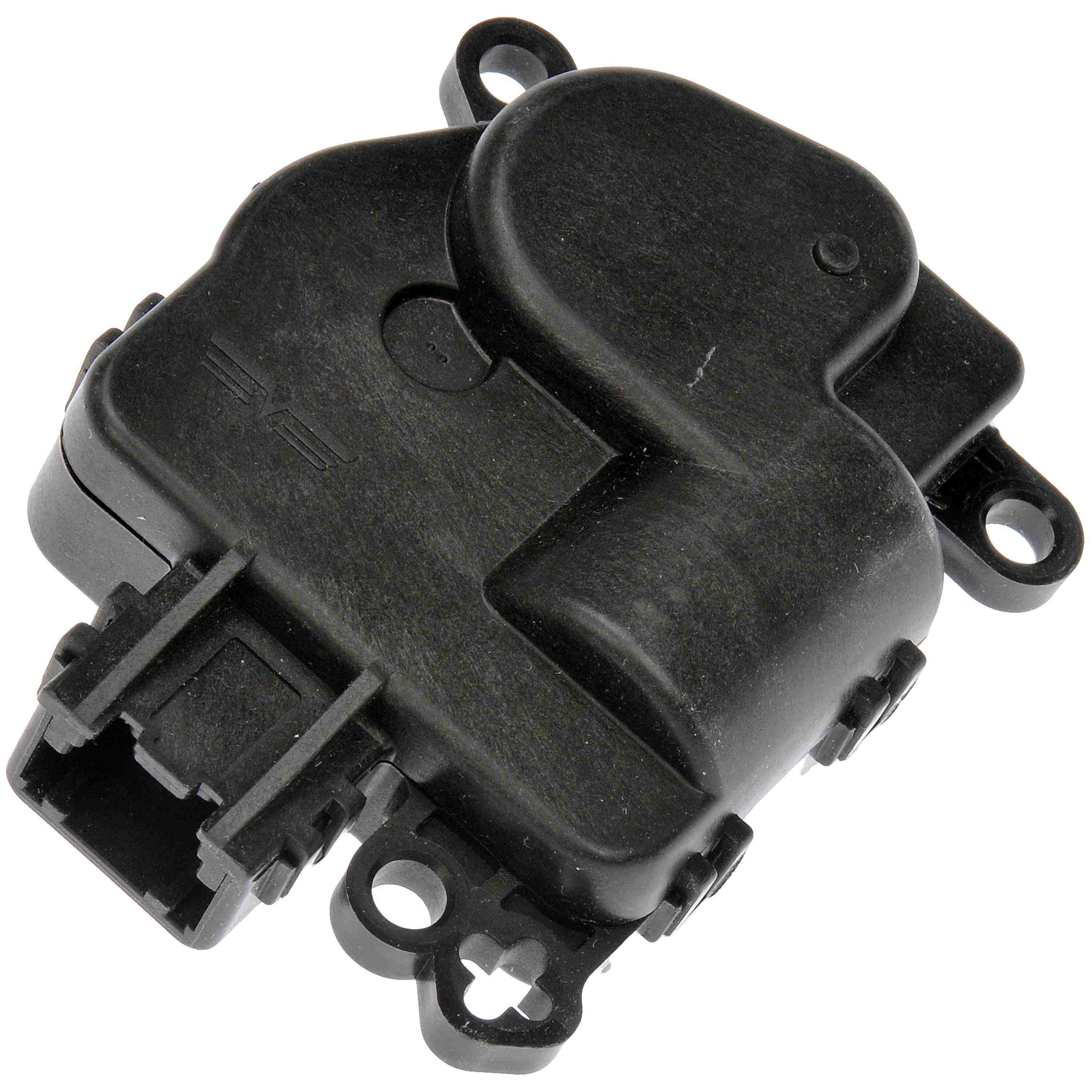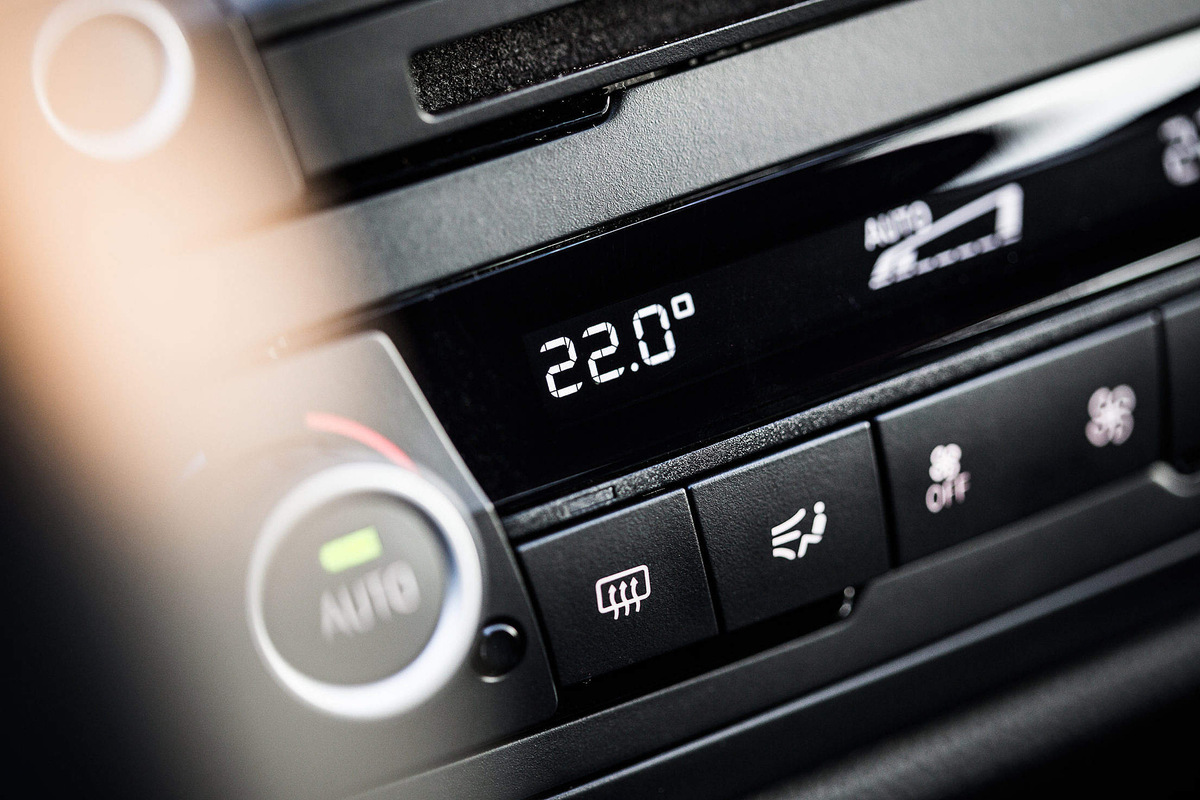Home>Home Maintenance>What Does The Accumulator Do In The Air Conditioning System


Home Maintenance
What Does The Accumulator Do In The Air Conditioning System
Modified: March 6, 2024
The accumulator is a crucial component of the air conditioning system that helps to collect and store excess liquid refrigerant, ensuring efficient and reliable cooling. Learn more about its importance and maintenance for proper home-maintenance.
(Many of the links in this article redirect to a specific reviewed product. Your purchase of these products through affiliate links helps to generate commission for Storables.com, at no extra cost. Learn more)
Introduction
Welcome to the world of home maintenance! Whether you’re a seasoned DIY enthusiast or a homeowner looking to understand the ins and outs of your air conditioning system, this article is here to guide you. One of the crucial components of the air conditioning system is the accumulator. In this article, we will delve into what the accumulator is, its function within the system, and how to troubleshoot and maintain it effectively.
Understanding the inner workings of your air conditioning system can be beneficial in several ways. It allows you to identify potential issues, perform basic troubleshooting, and make informed decisions when it comes to repairs and maintenance. So, let’s dive in and explore the role of the accumulator in your air conditioning system.
Key Takeaways:
- The accumulator in your air conditioning system acts as a protective barrier, regulating refrigerant flow, removing moisture and bubbles, and ensuring efficient cooling performance.
- Signs of a malfunctioning accumulator include insufficient cooling, frequent compressor cycling, frost or ice buildup, strange noises, and refrigerant leakage. Regular maintenance and professional inspections are crucial for its proper functioning.
Read more: How To Flush Air Conditioning System
Function of the Air Conditioning System
Before we delve into the details of the accumulator, let’s first understand the overall function of the air conditioning system. The primary goal of an air conditioning system is to regulate the temperature and humidity levels within a confined space, such as your home or office. It achieves this by extracting heat from the indoor air and transferring it outside, leaving the interior cool and comfortable.
The air conditioning system consists of various components working together to achieve this cooling effect. These components include the compressor, condenser, evaporator, expansion valve, and the accumulator.
The compressor is responsible for circulating refrigerant throughout the system, increasing its pressure and temperature. The condenser and evaporator are heat exchange units that help transfer heat to and from the refrigerant. The expansion valve regulates the flow of refrigerant, allowing it to enter the evaporator in a controlled manner.
Now that we have a basic understanding of the air conditioning system, let’s zoom in on the role of the accumulator.
Components of the Air Conditioning System
To fully understand the role of the accumulator, let’s take a closer look at the various components that make up the air conditioning system.
- Compressor: The compressor is often referred to as the “heart” of the air conditioning system. It is responsible for pressurizing the refrigerant and circulating it through the system. The compressor plays a vital role in the heat exchange process.
- Condenser: The condenser is located outside the building and is responsible for releasing heat from the refrigerant. It helps convert the high-pressure gas refrigerant into a high-pressure liquid refrigerant.
- Evaporator: The evaporator is located inside the building and is responsible for absorbing heat from the indoor air. It helps convert the low-pressure liquid refrigerant into a low-pressure gas refrigerant.
- Expansion Valve: The expansion valve is a small metering device that regulates the flow of refrigerant into the evaporator. It controls the pressure and temperature of the refrigerant as it enters the evaporator.
- Accumulator: The accumulator, also known as the receiver-drier, is a cylindrical container located between the evaporator and the compressor. It plays a crucial role in maintaining the efficiency and longevity of the air conditioning system.
Each component in the air conditioning system performs a specific task to ensure optimal cooling performance. Now that we have a clearer understanding of the components, let’s focus on the role of the accumulator and why it is essential in the system.
Understanding the Accumulator
The accumulator is a vital component in the air conditioning system that helps ensure the proper functioning and longevity of the system. It is a cylindrical container typically located between the evaporator and the compressor.
The main purpose of the accumulator is to store and regulate the flow of refrigerant within the system. It acts as a temporary storage unit for excess liquid refrigerant, ensuring that only gaseous refrigerant enters the compressor. This is important because compressing liquid refrigerant can damage the compressor.
The accumulator also plays a role in removing any moisture present in the system. Moisture can be detrimental to the proper functioning of the air conditioning system and can lead to corrosion and refrigerant contamination. The accumulator contains a desiccant, which absorbs any moisture present in the refrigerant.
Additionally, the accumulator helps to separate any air or gas bubbles from the refrigerant. These bubbles can hinder the cooling process and reduce the overall efficiency of the system. The accumulator allows these bubbles to rise to the top, where they can be safely expelled from the system.
By performing these functions, the accumulator helps to optimize the performance of the air conditioning system, prevent compressor damage, and maintain proper refrigerant flow and quality.
Now that we have a better understanding of the purpose and function of the accumulator, let’s take a closer look at why it is essential in the air conditioning system.
Purpose of the Accumulator in the Air Conditioning System
The accumulator serves several crucial purposes within the air conditioning system. Let’s explore the key roles it plays:
- Preventing Compressor Damage: One of the primary functions of the accumulator is to safeguard the compressor. It acts as a barrier, ensuring that only gaseous refrigerant enters the compressor. This is important because compressing liquid refrigerant can cause severe damage to the compressor, potentially leading to costly repairs or even the need to replace the entire unit.
- Regulating Refrigerant Flow: The accumulator helps regulate refrigerant flow within the system. It stores excess liquid refrigerant and releases it into the evaporator as needed. This helps maintain optimal system performance by preventing overloading or underutilization of the evaporator. The regulated flow of refrigerant also enhances heat exchange efficiency, leading to better cooling results.
- Removing Moisture: Moisture is a common enemy of air conditioning systems. It can corrode components, degrade performance, and lead to refrigerant contamination. The accumulator contains a desiccant material that absorbs any moisture present in the refrigerant, helping to keep the system dry and free from harmful effects of moisture accumulation.
- Separating Air and Gas Bubbles: Air and gas bubbles can form within the refrigerant system, and if left unchecked, they can negatively impact system performance. The accumulator facilitates the separation of these bubbles from the refrigerant, allowing them to rise to the top of the accumulator and be safely expelled from the system. This ensures optimal heat transfer and prevents any hindrance to the cooling process.
Overall, the accumulator plays a vital role in preserving the integrity and efficiency of the air conditioning system. Without a properly functioning accumulator, the system is at risk of damage, reduced performance, and shortened lifespan. Regular maintenance and monitoring of the accumulator is essential to ensure its continued effectiveness and to avoid more significant problems down the line.
Now that we understand the purpose of the accumulator, let’s explore the working principle behind its operation.
The accumulator in the air conditioning system acts as a storage tank for liquid refrigerant, helping to ensure a consistent flow of refrigerant to the evaporator and preventing any excess liquid from reaching the compressor. This helps to maintain the efficiency and performance of the air conditioning system.
Read more: What Is Air Conditioning
Working Principle of the Accumulator
The accumulator operates based on a simple yet effective working principle that enables it to perform its functions within the air conditioning system. Here’s how it works:
- Refrigerant Storage: The accumulator acts as a temporary storage unit for excess liquid refrigerant. As the refrigerant flows from the evaporator to the accumulator, any surplus liquid refrigerant is collected and retained in the accumulator.
- Refrigerant Evaporation: Inside the accumulator, the stored liquid refrigerant undergoes a phase change. It evaporates, transforming from a liquid state to a gaseous state. This phase change is facilitated through the low-pressure environment within the accumulator.
- Removal of Moisture and Bubbles: The accumulator contains a desiccant material that actively absorbs any moisture present within the refrigerant. This helps keep the system dry and prevents the harmful effects of moisture buildup. Additionally, the accumulator allows any air or gas bubbles that may have formed within the refrigerant to rise to the top. From there, they can be safely expelled from the system.
- Regulated Flow to the Compressor: Once the excess liquid refrigerant has undergone phase change and separation of moisture and bubbles, the regulated flow of gaseous refrigerant is directed to the compressor. This ensures that only the appropriate refrigerant form enters the compressor, protecting it from potential damage caused by compressing liquid refrigerant.
By following this working principle, the accumulator helps maintain the integrity and efficiency of the air conditioning system. It ensures that the compressor remains protected, regulates refrigerant flow, removes moisture and bubbles, and enables the system to perform optimally.
However, it’s important to note that the working principle of the accumulator may vary slightly depending on the specific design and configuration of the air conditioning system. Therefore, it’s always recommended to refer to the manufacturer’s instructions and guidelines for your particular system.
Now that we understand how the accumulator works, let’s explore some common signs that indicate a malfunctioning accumulator.
Signs of a Malfunctioning Accumulator
A malfunctioning accumulator can lead to various issues in the air conditioning system. Being able to recognize the signs of a faulty accumulator is essential for timely troubleshooting and repair. Here are some common indicators that your accumulator may be experiencing problems:
- Insufficient Cooling: If your air conditioner is no longer providing the same level of cooling comfort as before, it could be due to a malfunctioning accumulator. A faulty accumulator may restrict the flow of refrigerant, resulting in reduced cooling performance.
- Frequent Cycling of the Compressor: A malfunctioning accumulator can cause the compressor to cycle on and off more frequently than usual. This can be observed as the compressor constantly starting and stopping, leading to inefficient operation and increased energy consumption.
- Frost or Ice Buildup: Excessive frost or ice buildup on the evaporator coil can be a sign of a malfunctioning accumulator. When the accumulator fails to regulate the flow of refrigerant correctly, it can cause the evaporator to become too cold, leading to ice formation.
- Strange Noises: A malfunctioning accumulator can lead to unusual noises coming from the air conditioning system. You may hear gurgling sounds or hissing noises, indicating issues with refrigerant flow or the presence of air or gas bubbles in the system.
- Leakage: Accumulator failures can sometimes result in refrigerant leakage. If you notice refrigerant stains, pools, or a strong, distinct smell around your air conditioner, it’s important to address it promptly, as refrigerant leakage can not only reduce system performance but also have environmental and health implications.
If you notice any of these signs, it is advisable to get professional assistance to diagnose and address the issue. An HVAC technician with expertise in air conditioning systems can thoroughly inspect the accumulator and determine if it needs to be repaired or replaced.
Now that we are aware of the potential signs of a malfunctioning accumulator, let’s explore some common causes of accumulator failure.
Causes of Accumulator Failure
Accumulator failure in an air conditioning system can occur due to various factors. Understanding these common causes can help you identify and address the problem effectively. Here are some potential culprits behind accumulator failure:
- Moisture Contamination: Moisture is a major enemy of air conditioning systems. If moisture enters the system, it can lead to corrosion, damage to critical components, and reduced efficiency. Accumulator failure can occur when the desiccant material inside becomes saturated with moisture, rendering it ineffective at removing moisture from the refrigerant.
- Refrigerant Contamination: Accumulator failure can also result from refrigerant contamination. If impurities or foreign substances enter the system, they can accumulate in the accumulator, obstructing proper refrigerant flow and causing operational issues.
- Restricted Refrigerant Flow: Accumulator failure may occur if the refrigerant flow is restricted due to clogs or blockages in the system. This can happen due to debris, dirt, or other contaminants that find their way into the air conditioning system, hindering the proper functioning of the accumulator and its ability to regulate refrigerant flow.
- Excessive Heat Exposure: The accumulator is constantly exposed to heat as part of its function within the air conditioning system. However, excessive heat exposure, such as from prolonged exposure to high ambient temperatures or hotspots within the system, can result in damage to the accumulator, leading to failure over time.
- System Age and Neglect: Like any other component, accumulators have a limited lifespan. With age and lack of proper maintenance, accumulators can deteriorate and become more prone to failures. Regular maintenance, including cleaning and inspections, can help identify potential issues early on and prevent premature failure.
It’s important to note that these causes can often be interrelated, and multiple factors may contribute to accumulator failure. Regular maintenance, such as changing the desiccant, checking for refrigerant leaks, and ensuring proper airflow, can help mitigate these issues and prolong the lifespan of the accumulator.
Now that we understand the potential causes of accumulator failure, let’s explore some troubleshooting and maintenance tips to keep your accumulator in good working condition.
Troubleshooting and Maintenance of the Accumulator
Proper troubleshooting and maintenance of the accumulator can help identify and prevent potential issues, ensuring the smooth operation of your air conditioning system. Here are some key tips for troubleshooting and maintaining the accumulator:
- Regular Inspections: Schedule regular inspections of your air conditioning system, including the accumulator, by a qualified HVAC technician. They can check for any signs of wear and tear, refrigerant leaks, condensation, or other issues that may affect the performance of the accumulator.
- Desiccant Replacement: The desiccant material inside the accumulator absorbs moisture and needs to be replaced periodically. Consult the manufacturer’s guidelines or seek professional assistance to determine the appropriate interval for desiccant replacement.
- Cleaning and Maintenance: Keep the area around the accumulator clean and free from debris. Inspect the accumulator for any signs of debris or blockages, and gently clean it if necessary. Ensure proper airflow around the accumulator to prevent excessive heat buildup.
- Addressing Refrigerant Leaks: If you suspect a refrigerant leak, it’s important to address it promptly. Accumulator failure can occur due to low refrigerant levels, which can result from a leak. Have a professional technician locate and repair any leaks to prevent further damage to the accumulator and other components.
- System Maintenance: Proper maintenance of the overall air conditioning system is crucial for the longevity and proper functioning of the accumulator. Regularly replace air filters, clean evaporator and condenser coils, and ensure proper airflow throughout the system.
- Professional Assistance: If you encounter any issues with your air conditioning system or suspect a problem with the accumulator, it’s always best to seek the expertise of a professional HVAC technician. They have the knowledge, skills, and tools to accurately diagnose and resolve any problems.
By following these troubleshooting and maintenance tips, you can help ensure the efficient operation of the accumulator and the overall air conditioning system. Proactive maintenance and early problem detection can save you from costly repairs and inconvenience in the long run.
Now, let’s summarize what we’ve covered in this article.
Read more: What Does An HVAC Technician Do
Conclusion
Understanding the role of the accumulator in your air conditioning system is essential for effective troubleshooting, maintenance, and overall system performance. The accumulator serves as a vital component, protecting the compressor, regulating refrigerant flow, removing moisture and bubbles, and ensuring optimal cooling efficiency.
By recognizing the signs of a malfunctioning accumulator, such as insufficient cooling, frequent compressor cycling, frost or ice buildup, strange noises, or refrigerant leakage, you can take timely action to address the issue. Regular maintenance, including desiccant replacement, cleaning, and professional inspections, can help prevent accumulator failure and extend its lifespan.
Common causes of accumulator failure include moisture contamination, refrigerant contamination, restricted refrigerant flow, excessive heat exposure, and neglect. Understanding these causes can help you identify potential issues and take proactive steps to mitigate them.
Remember to consult the manufacturer’s guidelines and seek professional assistance for troubleshooting and maintenance tasks. HVAC technicians have the expertise to diagnose and address accumulator-related problems accurately.
By following proper troubleshooting and maintenance procedures, you can ensure the accumulator operates efficiently, contributing to the overall performance and longevity of your air conditioning system.
Now that you have a deeper understanding of the accumulator and its importance within the air conditioning system, you can approach home maintenance with greater confidence and take proactive measures to keep your system running smoothly.
Stay cool and comfortable!
Frequently Asked Questions about What Does The Accumulator Do In The Air Conditioning System
Was this page helpful?
At Storables.com, we guarantee accurate and reliable information. Our content, validated by Expert Board Contributors, is crafted following stringent Editorial Policies. We're committed to providing you with well-researched, expert-backed insights for all your informational needs.













